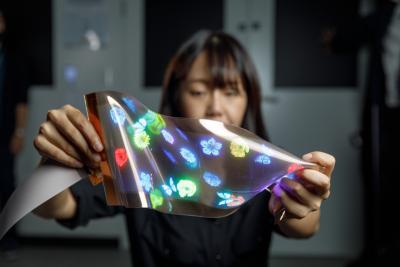APS manages to produce a 3000 PPI direct-emission OLED using its latest FMM technology
In 2021 The Korean government launched a new project that aims to develop technologies for the production of OLED microdisplays for AR applications. The project is led by AP Systems (APS Holdings), and aims to produce a direct emission OLED microdisplay with a resolution of 4,000 PPI by 2024. Earlier this year APS developed FMM masks that reached 1,000 PPI.
APS now announced that it has produced a 3,000 PPI direct-emission OLED microdisplay, based on its FMM technology. This is very impressive progress.







